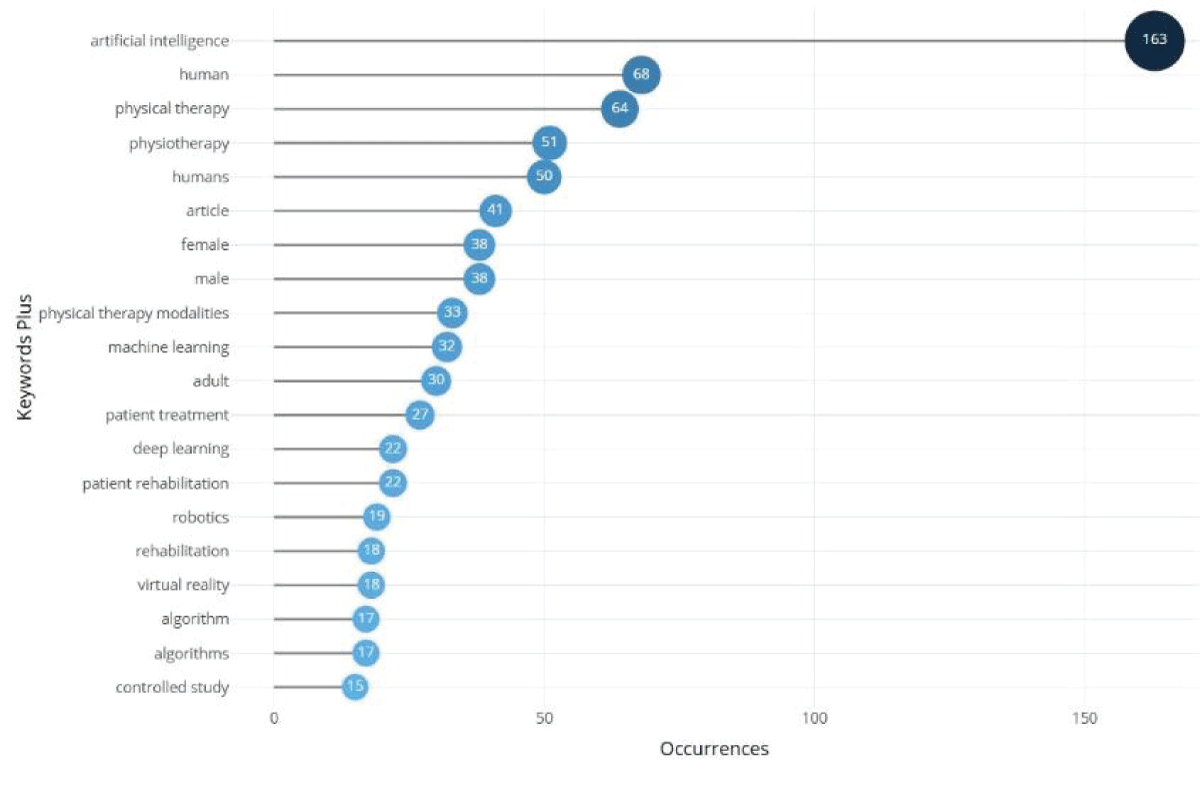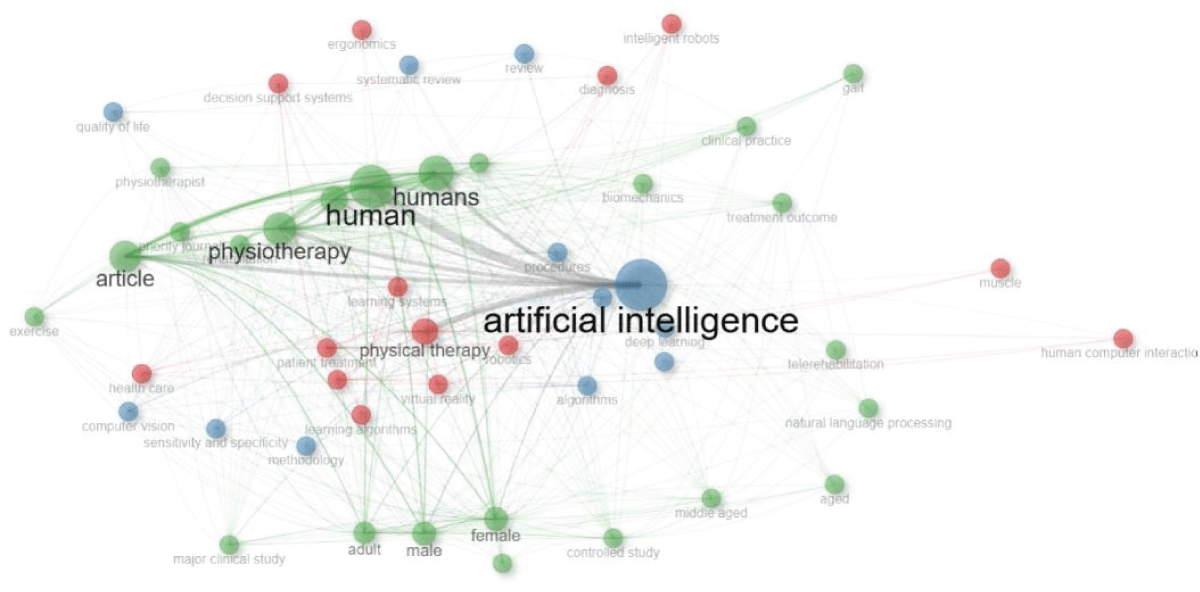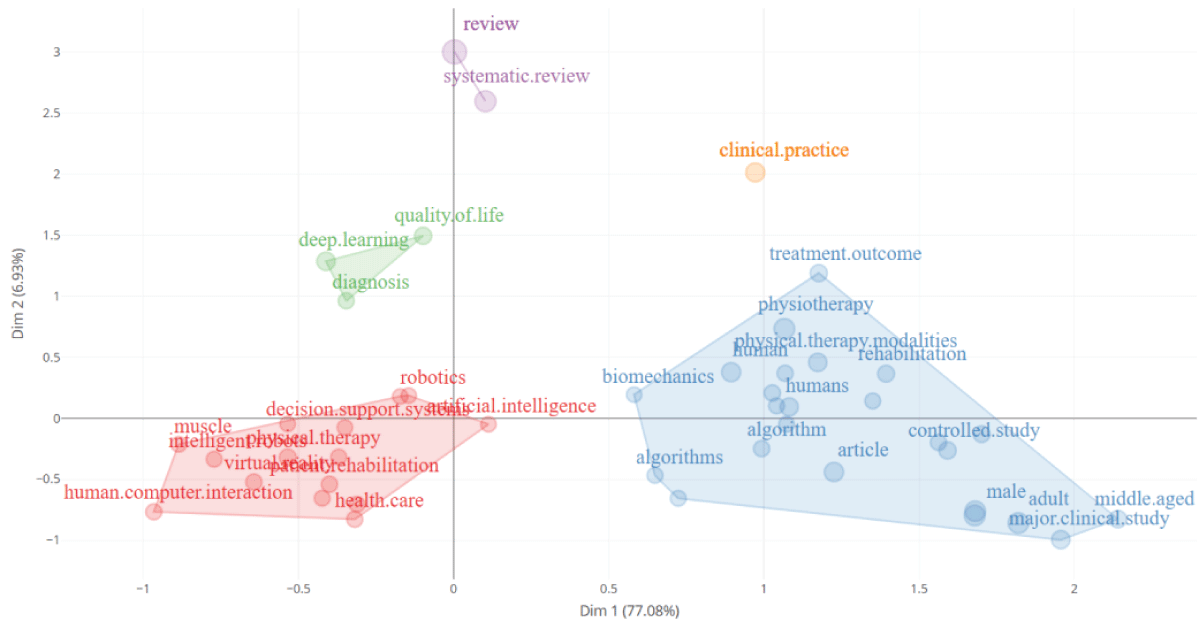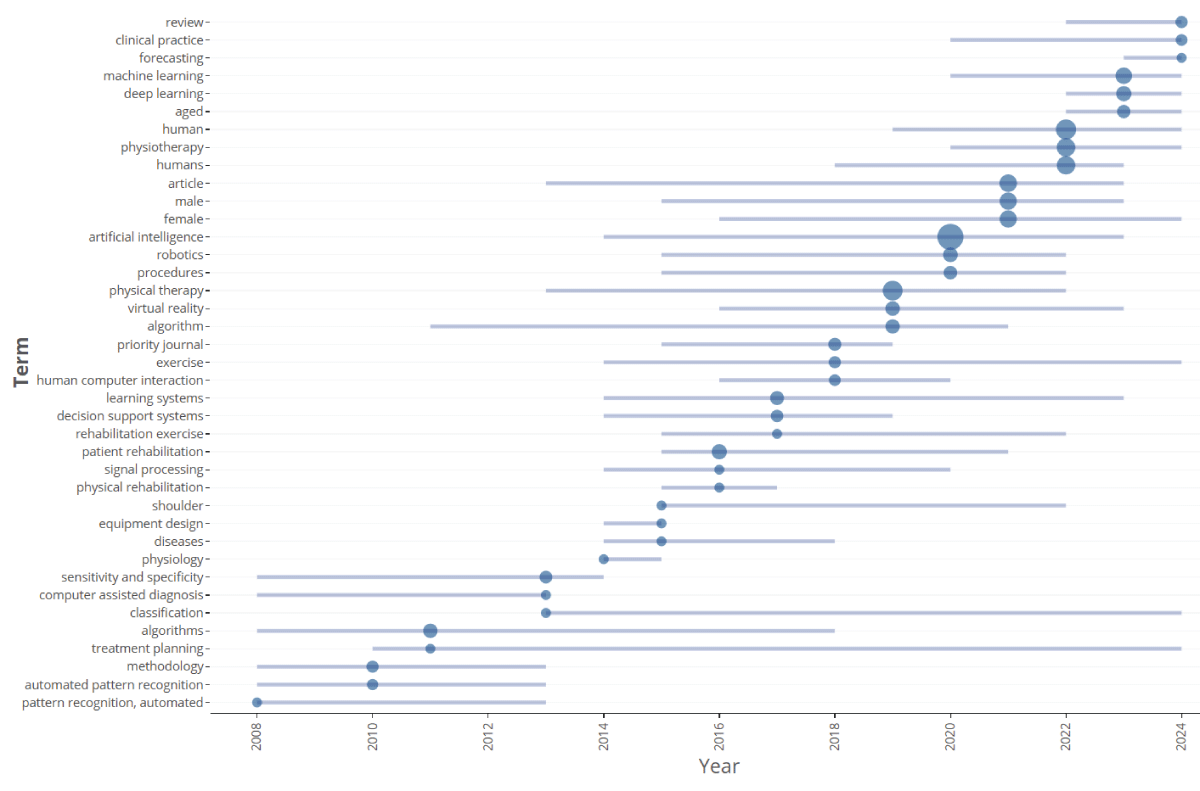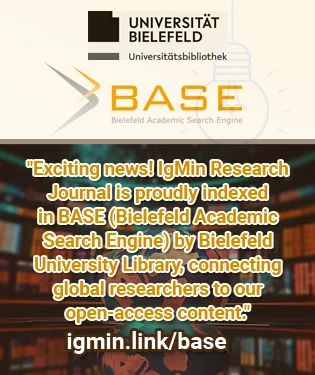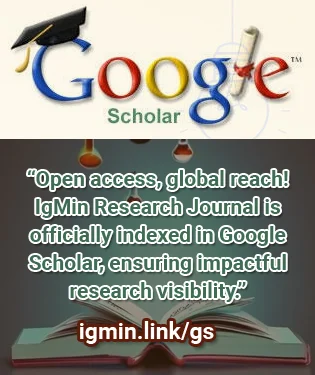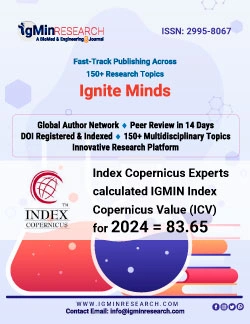Abstract
Artificial intelligence (AI) is the simulation of human intelligence and benchmarks in Physical Therapy (PT). Therefore, the updated knowledge derived from large databases is highly engaging. Data Mining (DM) analysis from a big database related to “AI” and “PT” was the aim for the co-occurrence of words, network clusters, and trends under the Knowledge Discovery in Databases (KDD). The terms “AI” and “PT” were cited from a big database in the SCOPUS. The co-occurrence, network clustering, and trend were computer-analyzed with a Bibliometric tool. Between 1993 and 2024, 174 documents were published, revealing the most frequently used terms related to AI, human, PT, physical modalities, machine learning, physical treatment, deep learning, patient rehabilitation, robotics, virtual reality, algorithms, telerehabilitation, ergonomics, exercise, quality of life, and other related topics. Five network clusters were discovered as; (1) AI, decision support systems, health care, human-computer interaction, intelligent robots, learning algorithms, neuromuscular, stroke, and patient rehabilitation, PT, robotics, etc., respectively, (2) aged, algorithms, biomechanics, exercise, exercise therapy, female, humans, machine learning, middle-aged, PT modalities, rehabilitation, treatment outcome, deep learning, etc., (3) deep learning, diagnosis, and quality of life, (4) review and systematic review, and (5) clinical practice. From 2008 to 2024, a trend emerged in the fields of algorithms, computer-assisted diagnosis, treatment planning, classification, equipment design, signal processing, AI, exercise, physical and patient rehabilitation, robotics, virtual reality, machine learning, deep learning, clinical practice, etc. Discovered knowledge of AI with PT related to different machine learning for use in clinical practice.





